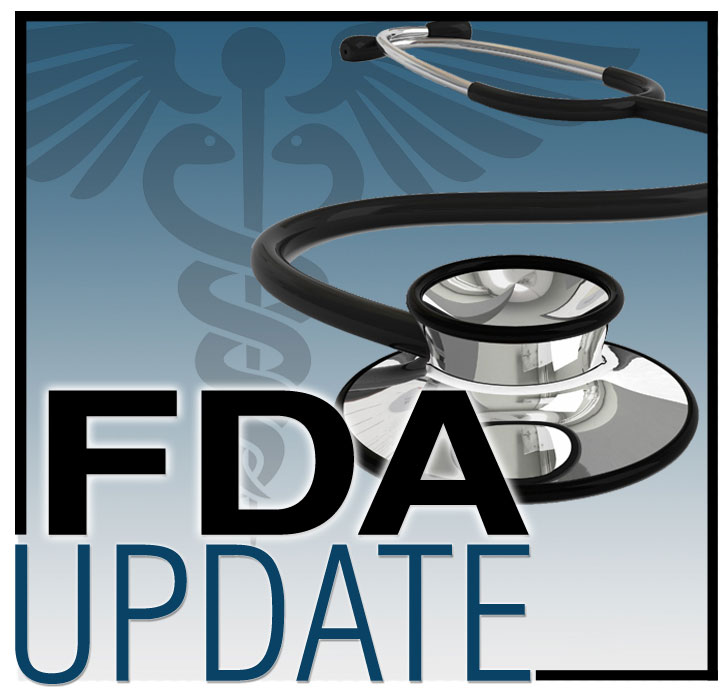FDA Approves Selinexor for Relapsed or Refractory Diffuse Large B-Cell Lymphoma
On June 22, 2020, the U.S. Food and Drug Administration (FDA) granted accelerated approval (https://www.fda.gov/drugs/resources-information-approved-drugs/fda-approves-selinexor-relapsedrefractory-diffuse-large-b-cell-lymphoma?utm_campaign=June%2022%2C%202020%20selinexor&utm_medium=email&utm_source=Eloqua&elqTrackId=58502e0a778e437098558d281566470b&elq=4ca010b091894e089cb0675a96b7c069&elqaid=13064&elqat=1&elqCampaignId=11125) to selinexor (Xpovio®) for adult patients with relapsed or refractory diffuse large B-cell lymphoma (DLBCL), not otherwise specified, including DLBCL arising from follicular lymphoma, after at least two lines of systemic therapy.

FDA granted the approval based on SADAL, a multicenter, single-arm, open-label trial (KCP-330-009; NCT02227251) of patients with DLBCL after receiving two to five systemic regimens. Patients received selinexor 60 mg orally on days 1 and 3 of each week.
Efficacy was based on overall response rate (ORR) and response duration, as assessed by an independent review committee using Lugano 2014 criteria. In 134 patients, ORR was 29% (95% CI = 22, 38), with complete response in 13% of patients. Of the 39 patients who achieved a partial or complete response, 38% had response durations of at least 6 months and 15% had response durations of at least 12 months.
The most common adverse reactions (≥ 20%), excluding laboratory abnormalities, were fatigue, nausea, diarrhea, decreased appetite, weight loss, constipation, vomiting, and pyrexia. Grade 3 or 4 laboratory abnormalities in ≥ 15% of patients were thrombocytopenia, lymphopenia, neutropenia, anemia, and hyponatremia. Serious adverse reactions occurred in 46% of patients, most often from infection. Thrombocytopenia was the leading cause of dose modifications. Gastrointestinal toxicity developed in 80% of patients and any grade hyponatremia developed in 61%. Central neurologic adverse reactions occurred in 25% of patients, including dizziness and mental status changes.
The prescribing information includes warnings and precautions for thrombocytopenia, neutropenia, gastrointestinal toxicity, hyponatremia, serious infection, neurologic toxicity, and embryo-fetal toxicity.
The recommended selinexor dosage for patients with DLBCL is 60 mg orally on days 1 and 3 of each week with antiemetic prophylaxis.
FDA approved the indication under accelerated approval based on response rate. Continued approval for the indications may be contingent on verification and description of clinical benefit in confirmatory trials.
FDA granted the application priority review and fast track designations. A description of FDA expedited programs is in the Guidance for Industry—Expedited Programs for Serious Conditions—Drugs and Biologics (https://www.fda.gov/regulatory-information/search-fda-guidance-documents/expedited-programs-serious-conditions-drugs-and-biologics).
Healthcare professionals should report all serious adverse events suspected to be associated with the use of any medicine and device to FDA’s MedWatch Reporting System (https://www.accessdata.fda.gov/scripts/medwatch/index.cfm) or by calling 800-FDA-1088.
For assistance with single-patient oncology investigational new drug applications, contact the Oncology Center of Excellence’s Project Facilitate (https://www.fda.gov/about-fda/oncology-center-excellence/project-facilitate) at 240-402-0004 or email OncProjectFacilitate@fda.hhs.gov (mailto:OncProjectFacilitate@fda.hhs.gov).
